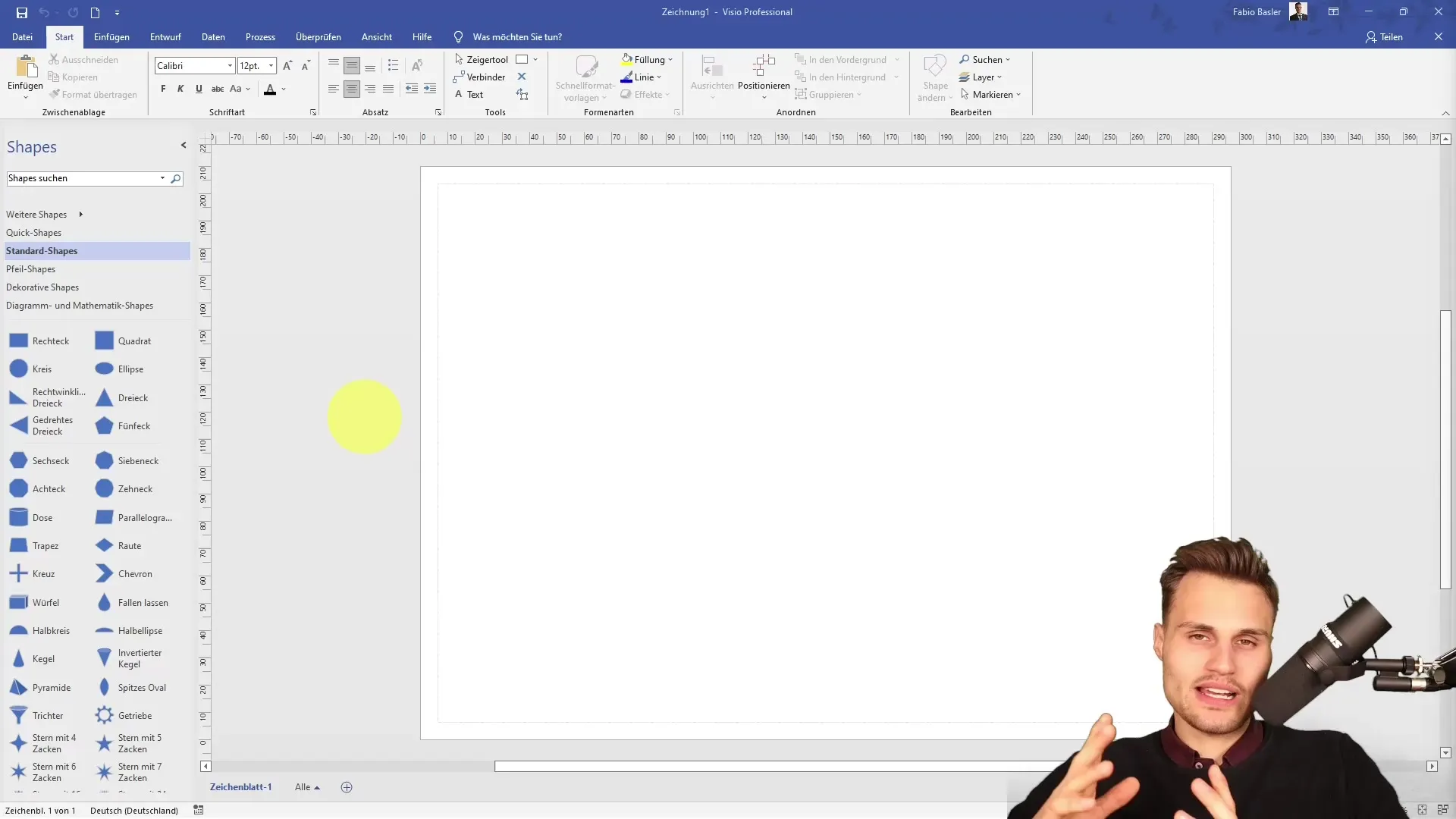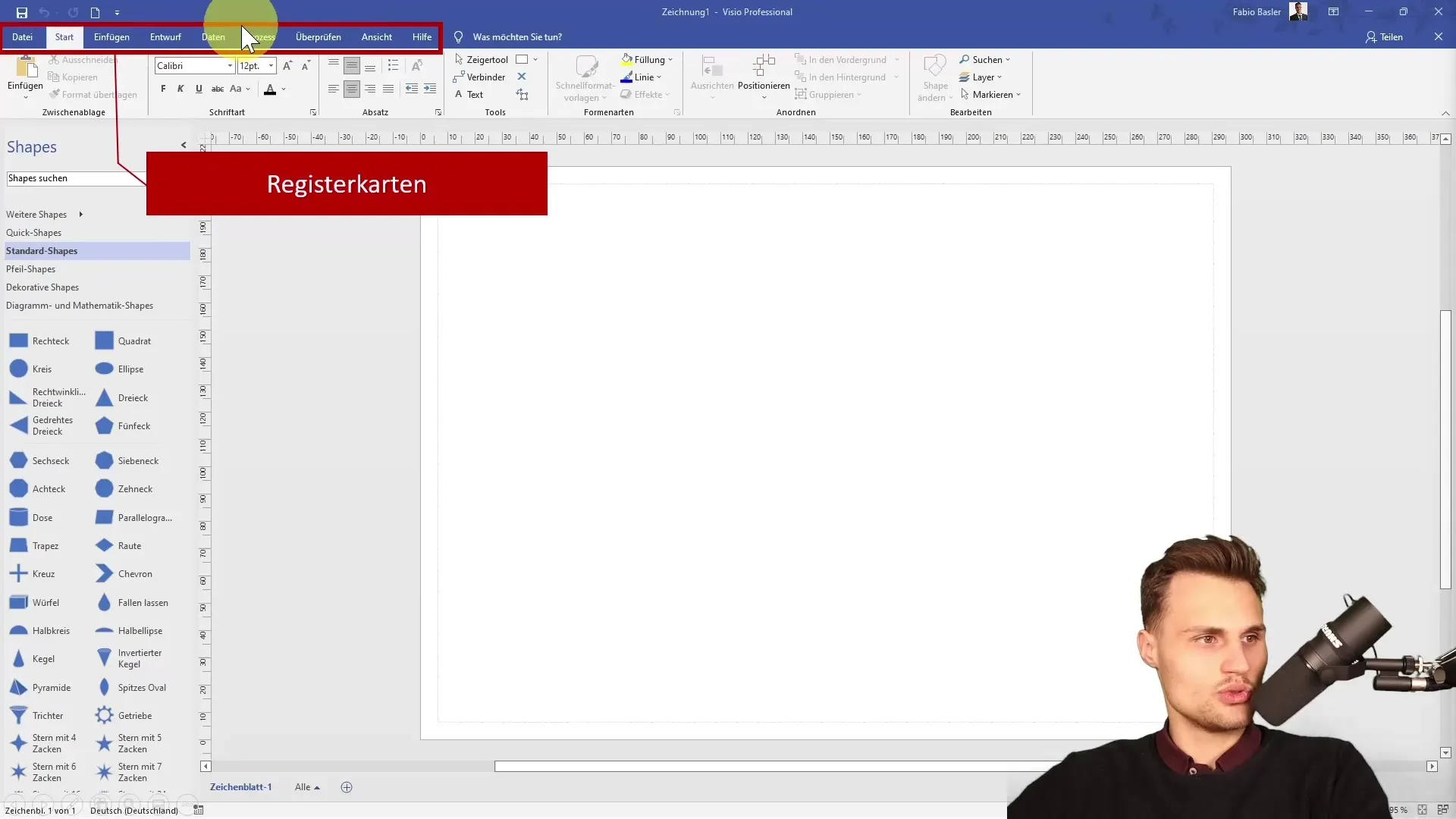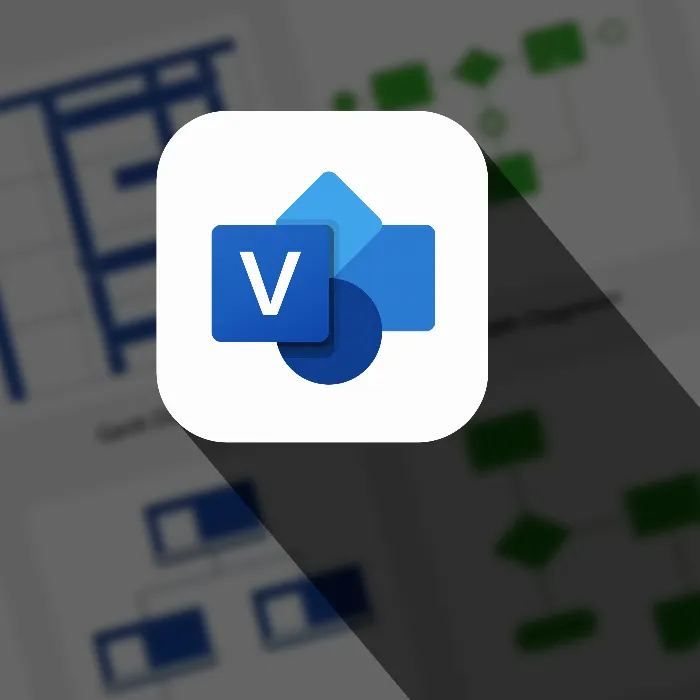When using Microsoft Visio, it is crucial to understand the basic terms in order to work effectively with the software. To help you navigate the application from the beginning, I will cover the key elements and functions that will ease your introduction.
Key Insights
- Templates and Shapes: These are the fundamental elements you work with in Visio.
- Menu Bar and Status Bar: These areas help you organize your projects and keep track of things.
- Workspace and Sheets: You can manage multiple sheets to effectively implement your projects.
Getting to Know the User Interface
To work efficiently, start by thoroughly exploring the user interface of Microsoft Visio. In the upper left corner, you will find various actions that encompass essential tools. There, you can save your projects, repeat actions, or undo them. This is particularly useful when you make mistakes and need to restore a step of your work.

The top bar also shows the current project name, which can be changed as needed. Here, you can also see if you are signed in with your Office account, which is important for accessing stored documents.
Another important element in your environment is the sharing option, which allows you to share your drawing with other users. You can find this function under the "File" tab.
Understanding Tabs and Menus
The menus in Visio are very similar to the various menus you will find in other Office applications. You have access to tabs such as "Home," "Insert," "Design," "Data," "Review," "View," and "Help."

It is important to configure these tabs and create custom tabs to optimize your workflow. You can even resize this menu bar to fit as much space as you need.
If you can't find an action in the tabs immediately, you can also use the search function. This makes it easier to find the specific commands you need.
Using Workspace and Sheets
The workspace of Visio, also known as the drawing area, is where you implement your designs. On the left side, you will find the shapes that contain various shapes you can use in your drawings.
Shapes are the graphic objects you use in your projects. They come from predefined templates like Standard, Arrow, or Decorative shapes.
At the bottom of the user interface, you will see various sheets that you can organize and name similarly to Excel.
You can customize colors, patterns, and other design elements to make your drawings more attractive and understandable. Additionally, you can use the zoom area to zoom in or out on the details of your drawing.
Status Bar and Macro Functions
Finally, the status bar plays an important role in Visio. Here, you get information about the current status of your work, such as the sheet you are on and how many shapes you have already used.
The macro symbol in the status bar allows you to record and repeat frequently performed actions, which is particularly useful when you need to perform the same steps multiple times.
Summary
The basic elements and functions of Microsoft Visio provide you with the necessary tools to successfully create your projects. Understanding the user interface, the various shapes and templates, as well as the efficiency of menus and functions, will make the application a valuable support in your daily work.
Frequently Asked Questions
How can I save a project in Visio?You can save your project using the corresponding click button in the upper left corner.
What are Shapes in Visio?Shapes are graphic objects you use in your drawings and find in various templates.
How can I share my drawing?You can find the sharing option under the "File" tab.
How can I customize the menu bar?You can adjust the size of the menu bar and add custom tabs.
How do I use macros in Visio?You can record and use macros through the corresponding symbol in the status bar.


